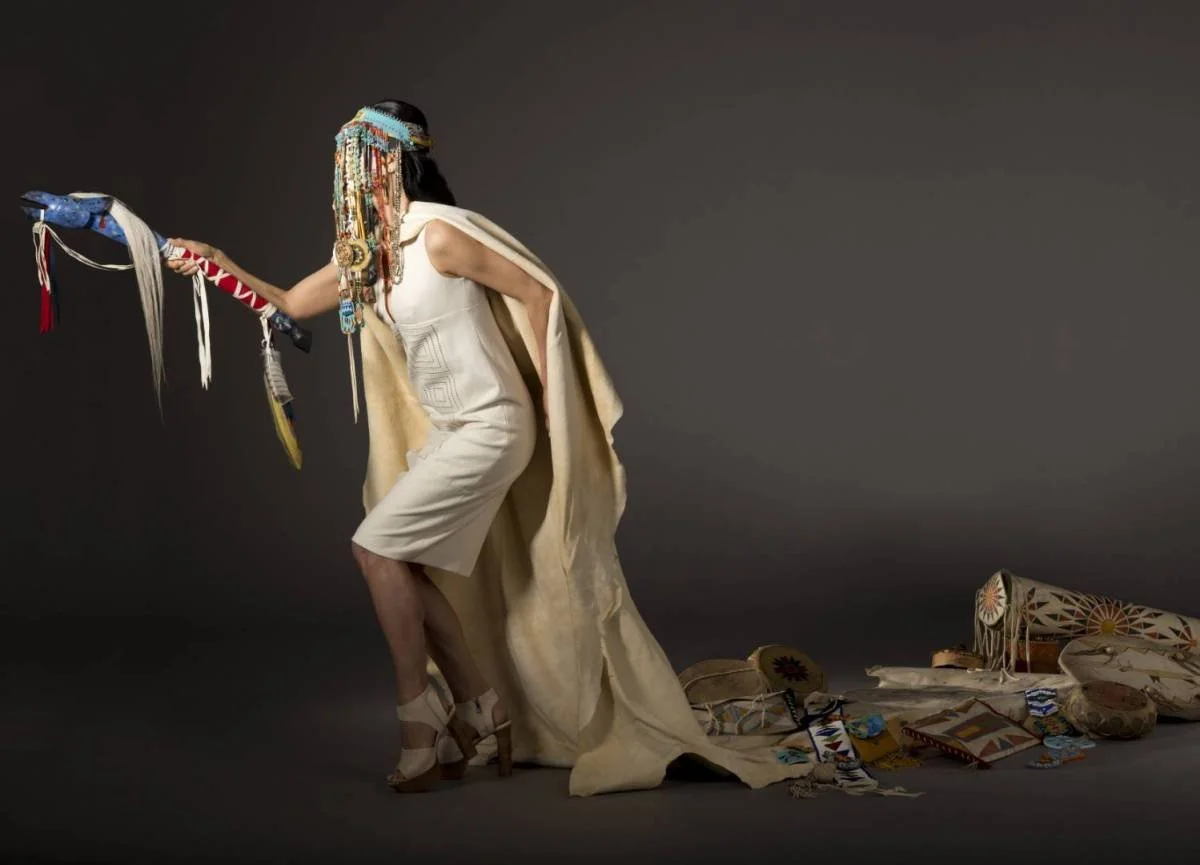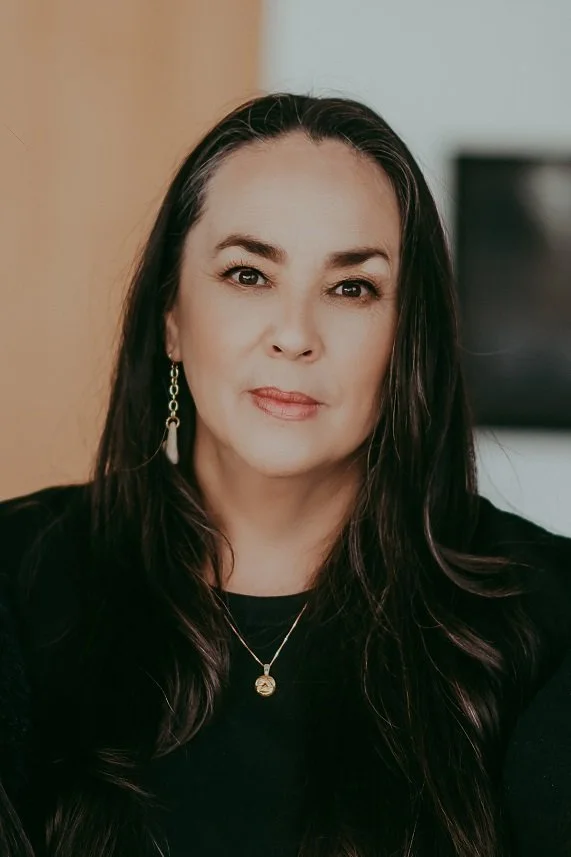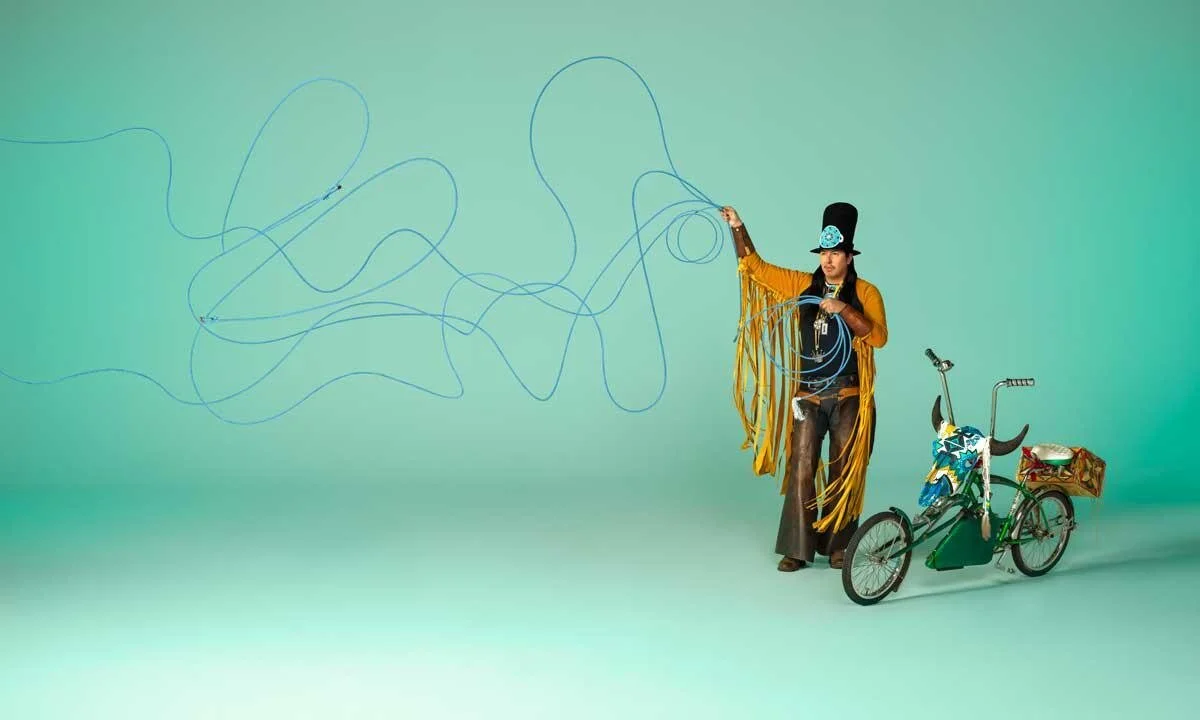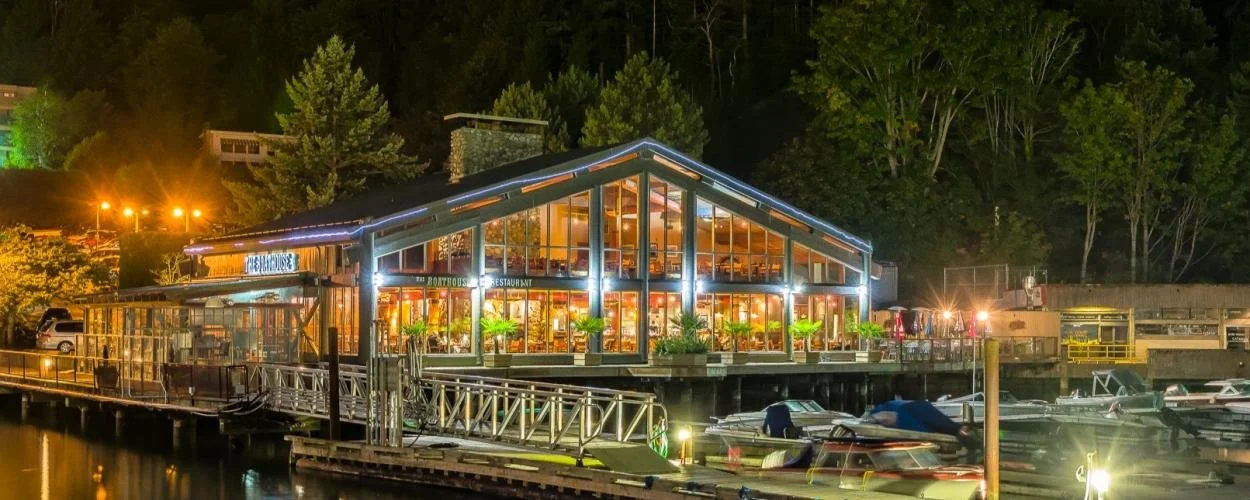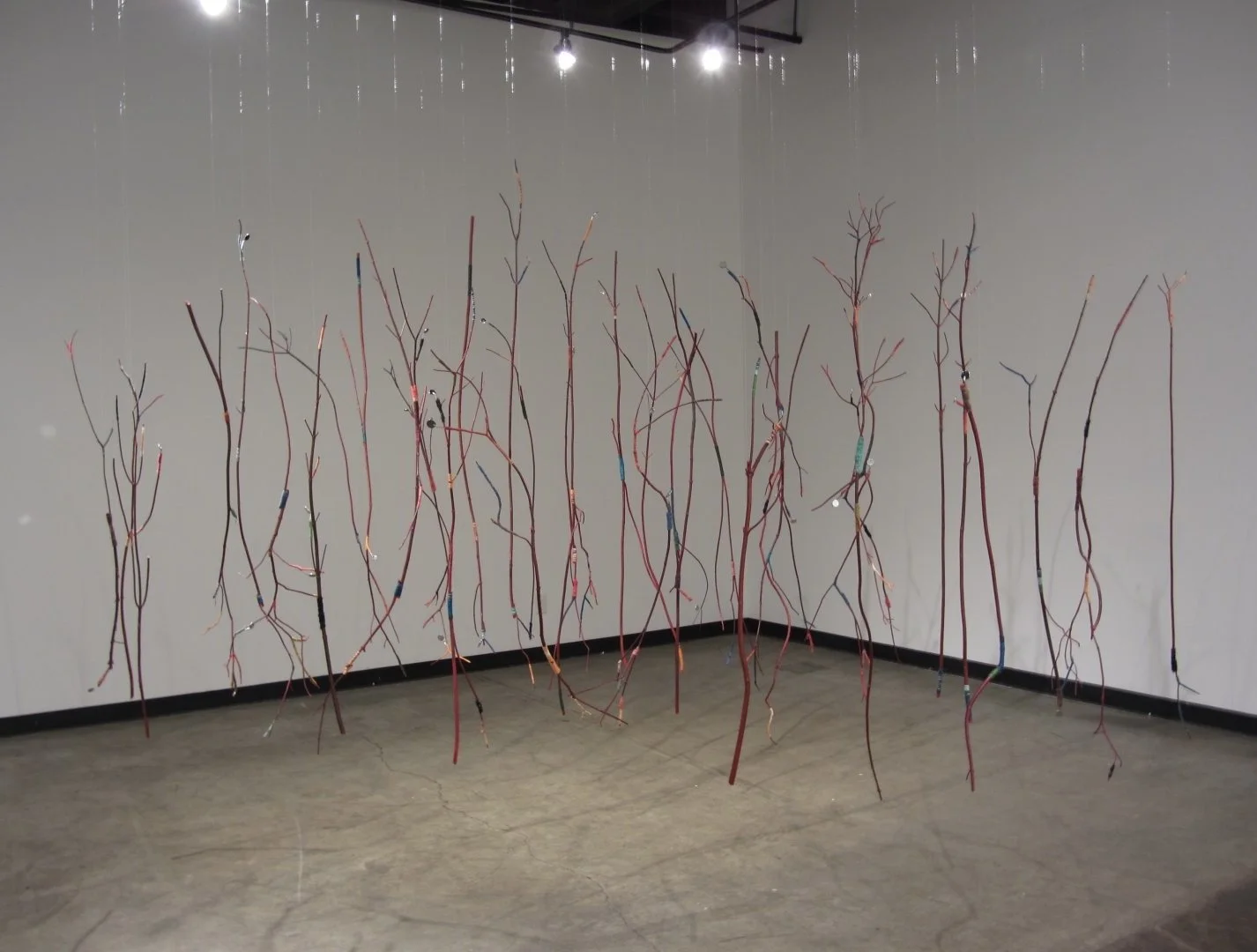Dana Claxton wins prestigious $100,000 Audain Prize for Visual Art
The Vancouver-based Hunkpapa Lakota artist works across film, photography, video, performance, sculpture, and installation
The LED “firebox” Cultural Belongings from the Vancouver Art Gallery solo exhibit Dana Claxton: Fringing the Cube, a solo retrospective in 2018.
Dana Claxton
HUNKPAPA LAKOTA (Sioux) artist Dana Claxton, who’s known for wry and empowering images of Indigenous subjects wearing elaborately beaded headdresses or riding fire-red Mustang bicycles, has won B.C.’s most prestigious art prize.
Today at a ceremony at the Hotel Vancouver, the multidisciplinary artist received the $100,000 Audain Prize for Visual Art—and said when she first found out, she was “elated and stunned at the same time.” The prize, given out by the Audain Foundation, is awarded to a senior artist each year in recognition of their outstanding contributions to the arts.
Raised in Moose Jaw, Saskatchewan and based here for the past four decades, the internationally acclaimed artist works across film, photography, video, performance, sculpture, and installation. She is also a screenwriter, playwright, and poet, as well as a respected teacher and mentor, working as associate professor in the department of art history, visual art, and theory at UBC.
Claxton created her first video work in the early 1990s. “She’s gathered disciplines since then almost like a snowball going downhill,” The Polygon Gallery executive director Reid Shier said at the ceremony today. “Each of these has emerged synchronously, side by side at the same time as her work as an artist.” He said she’s been integral not just to discussions around Indigenous women but the connections between fine art and craft, and traditional and contemporary art forms.
Dana Claxton’s Lasso, 2018, LED firebox with transmounted chromogenic transparency. Collection of the Vancouver Art Gallery, Audain BC Art Acquisition Fund
In her speech at the award ceremony, Claxton recalled her deep roots in Vancouver’s gallery scene, overseeing the Pitt Gallery for years (while Shier ran the nearby Or Gallery), and having some of her first shows at the grunt gallery.
Claxton has long explored Indigenous identity and iconography, the ongoing impacts of colonization, and body imagery and beauty. Often, her work critiques and reclaims racist narratives and imagery.
Claxton’s pieces have shown in such prestigious international venues as the Metropolitan Museum of Art and the Museum of Modern Art in New York. Her work is held in public, private, and corporate collections, including those of the National Gallery of Canada, Winnipeg Art Gallery, Vancouver Art Gallery, Mackenzie Art Gallery, Audain Museum, Seattle Art Museum, Henry Art Gallery, and Minneapolis Institute of Art.
In her powerful installation Buffalo Bone China (1997), a pile of smashed English bone china—made with the bones of buffalo—sits in front of a video of herds of buffalo and makes a strong statement about their extermination. Her staged 2008 Mustang Suite photo series depicts an Indigenous family, each member posed with their own “mustang”—including both the red-convertible and the banana-seated kind—in a work that refers to the relationship of the horse to freedom, and her own Lakota Sioux heritage; on a further level of symbolism, the red is a sacred colour to the Sioux people and brings to mind “Red Power” and other associations. Elsewhere, 2004’s triptych video installation Sitting Bull and the Moose Jaw Sioux traces the arrival of Sitting Bull and his people—including Claxton’s own ancestors—in the Moose Jaw area after the Battle of the Little Bighorn in 1876; it mixes landscape scenery with interviews and archival images. More recently, her “Headdress” series features women, such as performance artist Jeneen Frei Njootli, draped in copious beaded objects from the subject’s own collection, her eyes and cheeks obscured by beaded bags, bracelets, necklaces, moccasins, barrettes, and more. The images take the form of backlit lightboxes—or “fireboxes”, as Claxton calls them.
In a short film made about Claxton in honour of the Audain award, the artist expresses a hope that her work will “lift people up—both the viewer and the sitter” (see at bottom). “When you’re making beautiful images of Indigenous people, you’re hoping that cancels out the ugly stereotypes,” Claxton says.
In the award ceremony, Shier said one of Claxton’s biggest gifts to viewers is “a world of reciprocity where we might acknowledge an invitation to truly see the world anew thru the lens of an artist standing at our side and might be opening a window to a new horizon”.
The Audain Art Prize follows Claxton’s previous awards, including the VIVA Award (2001), Eiteljorg Fellowship (2007), Hnatyshyn Foundation Visual Arts Award (2019), YWCA Women of Distinction Award (2019), Governor General’s Award in Visual and Media Arts (2020), and the Scotiabank Photography Award (2020). Past Audain Art Prize winners include Ian Wallace, Stan Douglas, Paul Wong, Susan Point, and Jeff Wall.
“Dana Claxton is one of B.C.’s greatest artists,” said Michael Audain, chair of the Audain Foundation, in the announcement. “Besides having an outstanding international reputation, Ms. Claxton has had a considerable influence on younger artists and her UBC art students.
“The Audain Foundation wants to see our leading artists have a higher profile. After all, British Columbia has many important visual artists who are not as widely recognized as they should be,” he added. “With some of the world’s best contemporary artists, we believe they should be better known by all British Columbians.”
At the same ceremony, the Audain Foundation also announced five $7,500 travel grants for students in university visual-arts programs in British Columbia: Victoria Verge and Tiffany Law at UBC, Nicole Mandryk at the University of Victoria, Caitlin French at the Emily Carr University of Art + Design, and Noor Abouchehade at Simon Fraser University.
Looking toward the future, Claxton told the gathered crowd she is working hard to now add the role of serious art collector to her multifaceted resumé. “Three years ago I became a kind of obsessed art collector,” she said. “So now I’m making one of the most comprehensive collections of Northwest Coast women’s art….And through my collection, I hope to express my love for this land and Indigenous peoples.”
Also coming up: the Audain Art Museum's director and chief curator Dr. Curtis Collins promised "a very special project that involves Dana" at that Whistler landmark, coming up in "a year's time".


